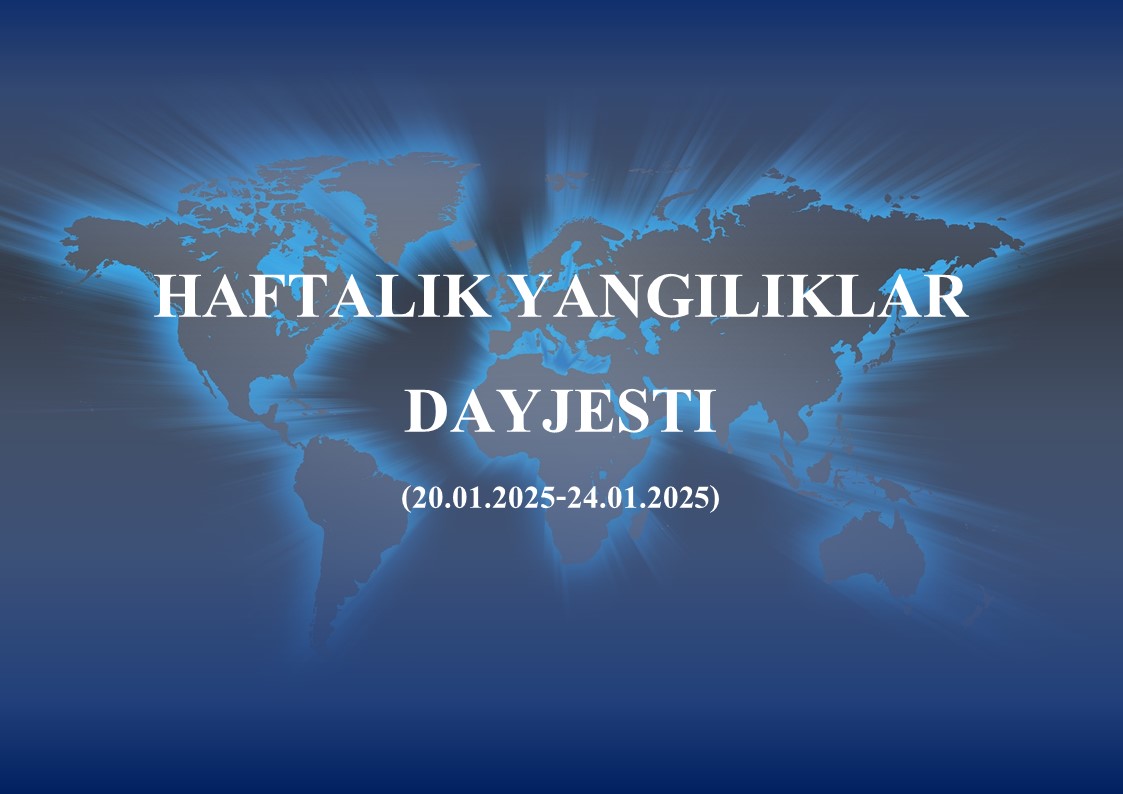1. The Trump team is preparing a sanctions plan against the Russian Federation.
The United States has imposed new sanctions on the oil and gas sector of the Russian economy. Two of Russia's four largest oil producers, "Gazprom neft" and "Surgutneftgaz" as well as dozens of oil service companies and global traders that sell Russian oil, are subject to a new set of restrictions.
2. The US government is introducing new rules for the supply of artificial intelligence chips.
The new rules divide the world into three tiers. 18 countries, including Japan, the UK, South Korea and the Netherlands, will be largely exempt from the rules. About 120 other countries, including Singapore, Israel, Saudi Arabia and the United Arab Emirates, will face certain restrictions. Countries under arms embargoes, such as Russia, China and Iran, will not be able to get the technology at all.
CHINA
1.China stopped tankers carrying Russian oil off the coast.
Five tankers with about 4 million barrels of Russian oil are lying idle off the coast of China, four of which have been hit by US sanctions. The situation could lead to ship-to-ship fuel overloading and increased use of small ports.
For reference: Average daily exports of Russian oil to China fell by 250,000 barrels per day in December 2024.
2.China has increased imports of inert gases from Russia.
China tripled its imports of inert gases from Russia last year, to $115.7 million. China bought Russian helium for $111.5 million, selenium for $2.3 million, and boron and tellurium for $1.9 million. Russia ranked fourth in terms of imports of inert gases to China. The top five also include Germany ($574.6 million), Qatar ($271 million), Malaysia ($146.7 million), and the United States ($91.9 million).
3. Another crisis in China's financial markets.
The CSI 300 (Customer Satisfaction Index) index fell 2.9 percent. The yuan fell to a 15-month low of 7.33 yuan per dollar. Long-term government bond yields also fell to a record low. The main reason for this instability is the decline in investor confidence in the Chinese government's economic policies.
RUSSIA
1. Reported on the European Union's plans to abandon Russian gas and aluminum.
The duration and scope of the restrictions on the supply of Russian aluminum have not yet been determined. It is also not yet known in what format the cessation of gas supplies from Russia is planned.
The draft proposals for the 16th package of EU sanctions against Russia are still under discussion and may change before their official announcement.
UZBEKISTAN
1. Kazakhstan has suspended potato exports to Uzbekistan for 6 months.
The main reason for the increase in potato prices in Kazakhstan was increased demand from neighboring countries and a significant increase in export prices. The ban does not apply to member states of the Eurasian Economic Union. In Uzbekistan, due to increased demand and higher export prices, the production increased by 1.5 times this year, from 411 thousand tons to 605 thousand tons.
2. In 2024, Uzbekistan increased gas imports by 2.4 times and exports to China by a quarter.
In January-December, fuel imports from Turkmenistan and Russia increased by 2.41 times, reaching $1.67 billion. Monthly natural gas supplies slowed down and amounted to $127.9 million. In 2023, Uzbekistan turned from an exporter into an importer of gas for the first time in the history of independence.
3. The Kushtepa Canal will be completed in five years. About the worsening water situation in Uzbekistan.
The second part of the project to build Afghanistan's Qoshtepa Canal is 58 percent complete. Currently, 3,500 people and 3,000 pieces of equipment are involved in the construction. The Qoshtepa Canal will begin operating in 5 years.
The Amu Darya, which originates in Tajikistan and Afghanistan, is an important water source for Uzbekistan and Turkmenistan. In 2023, the total volume of water withdrawal from the river was 47.6 cubic kilometers. Afghanistan uses about 6 percent of the total volume of the river's water annually.
The Qoshtepa Canal is expected to stretch for 285 kilometers, with a width of 100 meters and a depth of 8.5 meters. Water will flow into it from the Amu Darya in Balkh province, through Juzhan, and then to Faryab. The construction of the canal is divided into three phases, and currently 58 percent of the second phase, covering a length of 177 kilometers, has been completed. The project is expected to be fully completed within five years. The construction involved 5,500 workers and 3,300 pieces of equipment.
The Ministry of Water Resources reported that 33 percent of the 40 km3 of water that the country uses on average per year simply leaks, seeps into the ground, and disappears. "That is, the water we use now does not even reach 30 km3. We need to concrete the canals as soon as possible to solve the problem and eliminate water waste," the expert noted.

